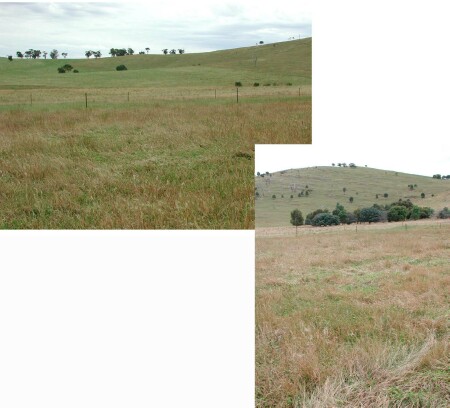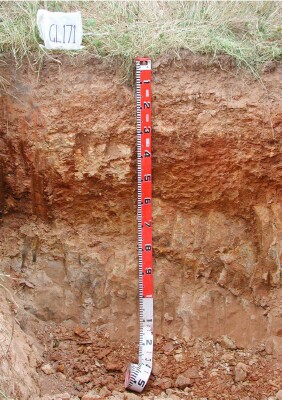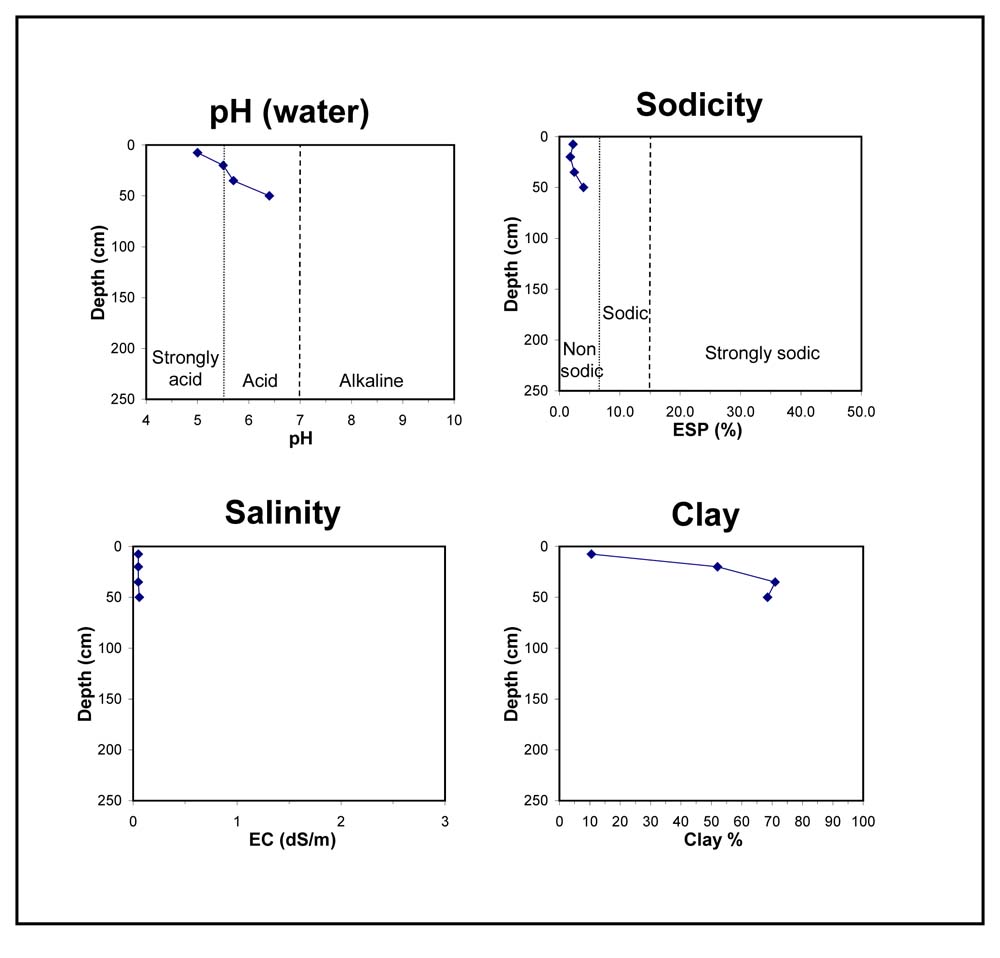GL171
Location: Arrarat
Australian Soil Classification: Mottled, Mesotrophic, Brown CHROMOSOL (confidence level 1)
General Landscape Description: Undulating rises
Site Description: Lower slope / footslope (7% slope)
Land Unit: Ararat Marine Siltstone
Geology: Cambrian / Ordovician marine siltstones
General Land Unit Description: The dominant landform of this land unit is dissected undulating rises (represented by this site), although there are some rolling low hills (GL166) and some undulating plains that are mainly at the footslopes of the rises. The major land element is the gentler footslopes of the undulating rises and plains. This site occurs on footslopes of the sedimentary undulating rises east of Ararat. The major soil type found on these slopes tend to be reddish and well structured strong texture contrast soils (Chromosols) (GL171). The topsoil and subsoil can be quite acidic and there may be high aluminium levels in some soils. There is evidence of an occasional bleached horizon. The soils are often quite shallow. The soils on the dissected rolling low hills are generally shallow, although they can be quite well structured and are commonly Sodic Red Chromosols (GL166). Banded sedimentary rock outcrop is common on these soil types, especially on the exposed westerly aspects.
Gully erosion on the plains below these hills and on the drainage depression is quite severe.

Soil Profile Morphology:
| Surface Soil |  | ||
| A1 | 0-15 cm | Dark yellowish brown (10YR3/4), sporadically bleached (10YR7/4d); fine sandy loam; weak medium polyhedral parting to moderate very fine polyhedral structure; very weak consistence dry; many medium angular platy quartz pebbles present; pH 5.0; gradual change to: | |
| Subsoil | |||
| B21 | 15-25 cm | Yellowish red (5YR5/6); medium clay; strong very fine subangular blocky structure; weak consistence , dry; pH 5.5; clear and wavy change to:
| |
| B22 | 25-45 cm | Yellowish red (10YR4/6); heavy clay; strong fine subangular blocky structure; weak consistence, moist; contains many medium angular to angular platy sandstone pebbles; pH 5.7; clear change to:
| |
| B23 | 45-60 cm | Yellowish brown (10YR5/8), with many red (2.5Y4/8) mottles; heavy clay; weak subangular blocky structure; pH 6.4; changes to: | |
| C | 60+ cm |
Key Profile Features:
- Strongly acid topsoil
- Strongly acid subsoil
- Shallow soil
- Many coarse fragments
- Strong texture contrast between topsoil and subsoil
- Mottled subsoil
- Topsoil dispersive when worked when wet
Soil Profile Characteristics:
- | pH | Salinity | ||
Surface Soil (A1 horizon) | Strongly Acid | Very Low | Non-Sodic | None1 |
Subsoil (15-25 cm) | Strongly Acid | Very Low | Non-Sodic | None |
Deeper Subsoil (45 -60 cm) | Slightly Acid | Very Low | Non-Sodic | None |

Chemical and Physical Analysis:
Horizon | Horizon Depth (cm) | pH (water) | pH (CaCl2) | EC dS/m | Organic Carbon % | Total Nitrogen % | Exchangeable Aluminium ppm | Exchangeable Acididty meq/100g | Exchangeable Cations | Coarse Sand (0.2-2.0 mm) % | Fine Sand (0.02-0.2 mm) % | Silt (0.002-0.02 mm) % | Clay (<0.002 mm) % | Field Capacity % w/w | Wilting Point % w/w | |||
Ca | Mg | K | Na | |||||||||||||||
meq/100g | ||||||||||||||||||
A1 | 0-15 | 5.0 | 4.2 | <0.05 | 0 | 0.07 | 89 | 7.3 | 0.76 | 0.49 | 0.16 | 0.2 | 8 | 61 | 19 | 11 | 18.5 | 5.2 |
B21 | 15-25 | 5.5 | 4.5 | <0.05 | 170 | 12 | 2.2 | 4.6 | 0.33 | 0.35 | 4 | 24 | 20 | 52 | 41.2 | 16.9 | ||
B22 | 25-45 | 5.7 | 4.8 | 0.05 | 60 | 12 | 1.5 | 8.4 | 0.58 | 0.57 | 1 | 16 | 11 | 71 | 36.2 | 23.4 | ||
B23 | 45-60 | 6.4 | 5.4 | 0.06 | <10 | 11 | 0.49 | 11 | 0.87 | 0.96 | 1 | 19 | 10 | 69 | 43.5 | 25.4 | ||
Profile Described By: Natalie Baxter and Nathan Robinson, 28th November 2000.


